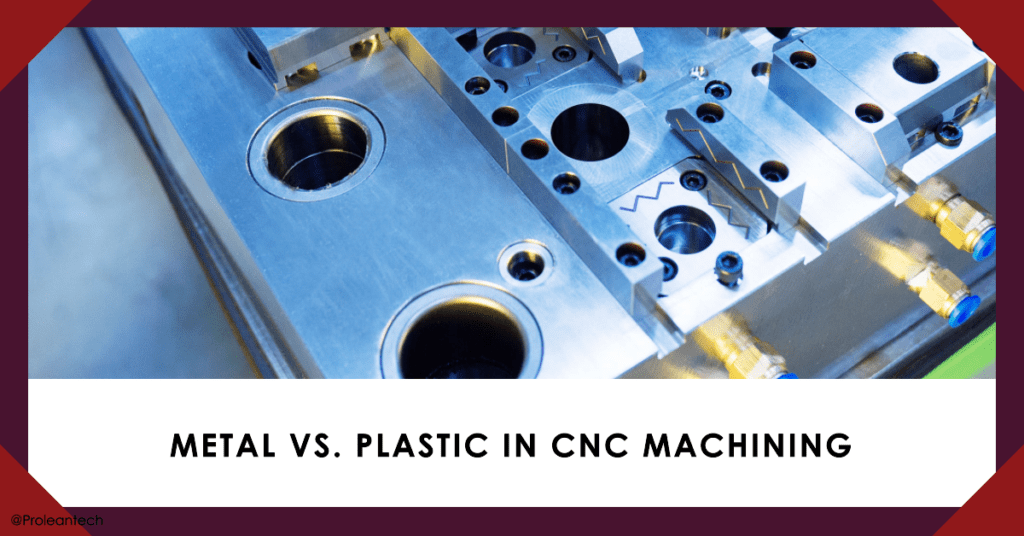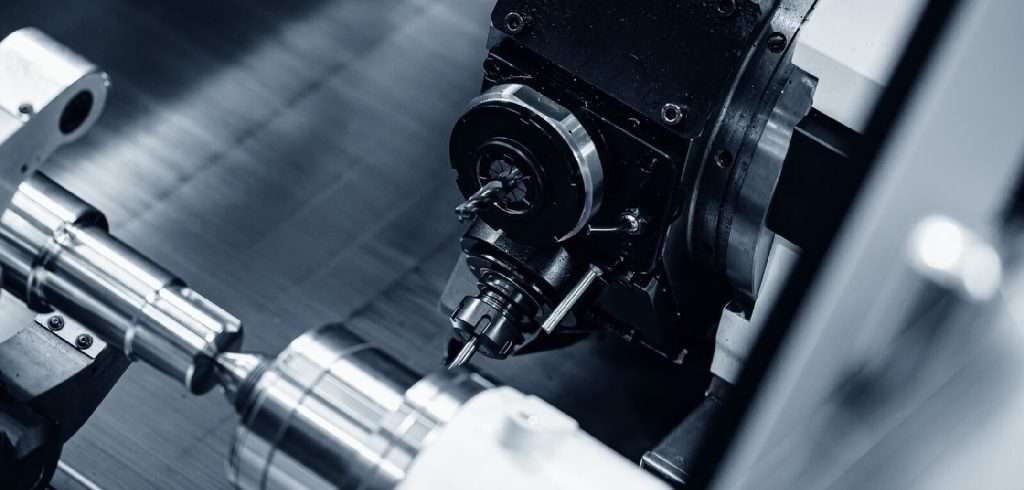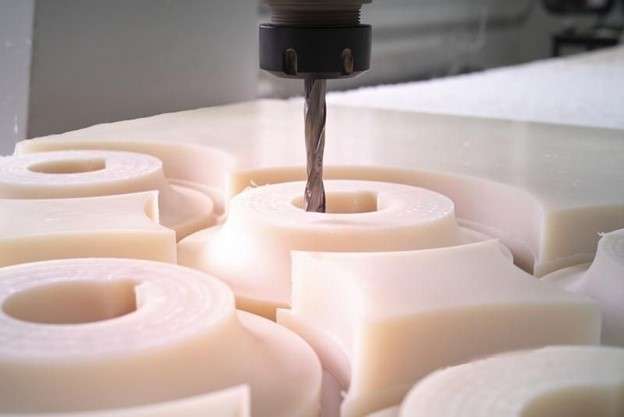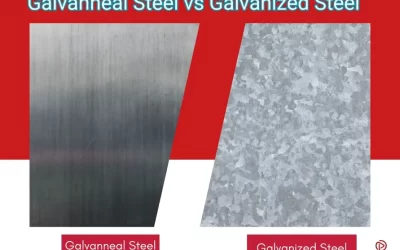
CNC machining is an automated manufacturing process in which pre-programmed computer software controls the movement of factory machinery and tools. The process can manage a range of complex machinery, from grinders and lathes to mills and routers. A significant advantage of CNC machining is its versatility in working with various materials, including metals and plastics.
In CNC machining, the choice between metal and plastic is dictated by factors such as the final product’s intended use, production costs, durability needs, and weight restrictions. This article provides an in-depth analysis of metal CNC machining versus plastic CNC machining, highlighting the differences, advantages, disadvantages, and applications of each.
An Overview of Metal CNC Machining

Metals are some of the most commonly used materials in CNC machining due in part to their robustness, durability, and heat resistance. Steel, aluminum, brass, and titanium are regularly employed in CNC machining to create components for industries as diverse as automotive, aerospace, medical, and electronics.
Metal machining entails specific techniques that may vary depending on the metal in question. For instance, while softer metals like aluminum and brass can be machined at high speeds with minimal tool wear, harder metals such as stainless steel and titanium require slower machining speeds and might involve increased tool wear.
Table: Common Metals Used in CNC Machining and Their Applications
| Metal | Typical Applications |
|---|---|
| Aluminum | Aircraft and automobile parts, architectural elements, electronic hardware |
| Brass | Plumbing and electrical components, decorative elements |
| Steel | Automotive components, construction materials, heavy-duty machinery parts |
| Titanium | Aerospace components, medical prosthetics, surgical instruments, high-performance automotive parts |
Despite its many advantages, metal CNC machining is not without its challenges. These include significant energy consumption, relatively high costs compared to plastics, and the need for substantial cooling and lubrication during machining.
The Plastic CNC Machining

On the other hand, plastic CNC machining is a process that lends itself well to the creation of parts requiring lighter weight, corrosion resistance, and lower costs. Various plastics, including machining nylon, acrylic, ABS, and polycarbonate, are commonly machined to produce parts for multiple industries, from healthcare and food processing to consumer goods and electronics.
Plastic part machining has unique methodologies, primarily driven by the material’s softer, more flexible nature than metals. For instance, plastics need lower cutting forces and can be machined at higher speeds. However, care must be taken to prevent excessive heating, which can lead to plastic melting or warping.
Bulleted List: Common Plastics Used in CNC Machining and their Applications
- Nylon: Gears, bearings, bushings, and other high-wear parts.
- Acrylic: Signs, displays, lenses, and light fixtures.
- ABS: Consumer goods, automotive components, and protective housings.
- Polycarbonate: Impact-resistant parts, protective gear, and medical devices.
While plastic CNC machining provides several advantages, such as cost-effectiveness and flexibility, there are considerations to consider. For instance, plastic components may not have the same strength or heat resistance as their metal counterparts, and some plastics may be susceptible to chemicals or UV light.
Comparing Material Properties: Metal vs. Plastic
While both metals and plastics can yield high-quality parts through CNC machining, the inherent differences in their material properties can significantly affect the final product’s characteristics.
Metal Properties
Metals are renowned for their strength, durability, and heat resistance. They can withstand high pressures and temperatures, making them suitable for applications that require robustness and longevity. Some metals, like stainless steel, offer corrosion resistance, enhancing their utility in harsh environments. On the downside, metals are usually heavier than plastics and may require more energy and resources to machine.
Plastic Properties
Plastics stand out for their lightweight nature, versatility, and resistance to corrosion. They are more flexible than metals, allowing for a greater range of shapes and designs. Moreover, certain plastics can mimic the appearance of other materials like glass or metal, opening up a variety of aesthetic possibilities. However, plastics generally lack the strength and heat resistance of metals, which can limit their use in high-stress or high-temperature applications.
Table: Comparing Material Properties
| Material | Strength | Durability | Heat Resistance | Corrosion Resistance | Weight |
|---|---|---|---|---|---|
| Metal | High | High | High | Varies | High |
| Plastic | Low-Medium | Medium | Low-Medium | High | Low |
Try Prolean Now!
Assessing Cost and Environmental Impact
The decision between metal and plastic CNC machining often involves cost and environmental considerations.
Cost Comparison
Generally speaking, plastic CNC machining tends to be more cost-effective than metal machining. Plastics are usually less expensive than metals, and their softer nature allows for faster machining speeds and less tool wear, further reducing costs. However, it’s essential to consider the total cost of ownership, including the part’s lifecycle costs. For example, if a metal part lasts longer than a plastic equivalent, the initial higher price might be offset over time.
Environmental Impact Comparison
Metals, while recyclable, require significant energy for extraction and processing, leading to higher carbon emissions. On the other hand, although less energy-intensive to produce, plastics contribute to waste and pollution problems if not correctly managed or recycled.
Bulleted List: Cost and Environmental Impact Factors
- Initial material cost
- Machining costs (speed, tool wear, energy use)
- Lifecycle costs (durability, maintenance)
- Recycling potential
- Energy use in material production
- Waste and pollution management
Applications of Metal & Plastic CNC Machining
Metal and plastic CNC machining has extensive applications across diverse industries due to their versatile properties. Here are a few examples:
| Industry | Metal CNC Machining Applications | Plastic CNC Machining Applications |
|---|---|---|
| Automotive | Engine components, exhaust parts, suspension components | Interior components, knobs, non-load-bearing parts, casings, connectors, buttons |
| Aerospace | Turbine parts, structural elements | – |
| Medical | Surgical instruments, implants, equipment parts | Non-invasive tools, enclosures, prosthetics |
| Construction | Heavy-duty machinery and infrastructure components | – |
| Electronics | – | Casings, connectors, buttons |
| Consumer Goods | – | Everyday items such as toys and kitchenware |
Making an Informed Decision: Metal or Plastic?
Deciding between metal and plastic CNC machining involves weighing the pros and cons based on your specific application. It’s vital to consider the component’s intended function, required material properties, cost implications, and environmental impact. Consulting with your CNC machining service provider can provide valuable insights and recommendations tailored to your project.
Table: Decision Factors
| Factor | Metal | Plastic |
|---|---|---|
| Strength | High | Low-Medium |
| Durability | High | Medium |
| Cost | Higher | Lower |
| Environmental Impact | Higher energy use, recyclable | Lower energy use, waste management concerns |
Conclusion
Choosing between metal and plastic for CNC machining requires careful consideration of the project’s specific requirements, budget constraints, and long-term objectives. While metal provides superior strength, heat resistance, and longevity, plastic offers cost efficiency, flexibility in design, and lighter weight. Therefore, neither is universally superior; the choice depends on the precise application.
Prolean’s CNC Machining Services are equipped to handle both metal and plastic machining tasks with exceptional precision and quality. Our team of experts works closely with you to understand your specific needs and deliver tailored solutions that strike the perfect balance between quality, cost, and performance. With Prolean, you can rest assured that your
FAQs
1. Can the same CNC machine handle both metal and plastic?
Yes, most CNC machines can handle a variety of materials, including metals and plastics. However, the specific machining parameters (like speed, feed rate, and tool type) will vary depending on the material.
2. Which is more expensive: metal or plastic CNC machining?
While the exact cost depends on numerous factors, plastic CNC machining is typically more cost-effective due to the lower cost of plastic materials and faster machining speeds.
3. Is plastic or metal more environmentally friendly in CNC machining?
Both have environmental considerations. Metals require more energy to produce and machine but are recyclable. Plastics use less energy in production and machining but can contribute to waste issues if not properly managed or recycled.
4. Which is stronger: metal or plastic?
Generally, metals are stronger and more durable than plastics. However, certain reinforced or high-performance plastics can offer strength characteristics that rival some metals.




0 Comments